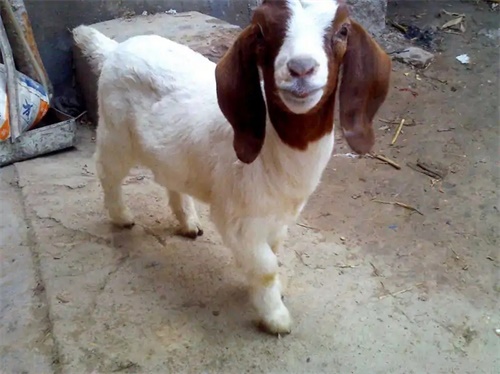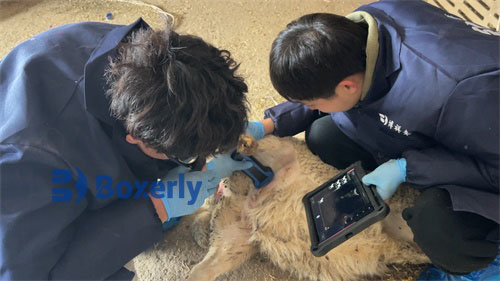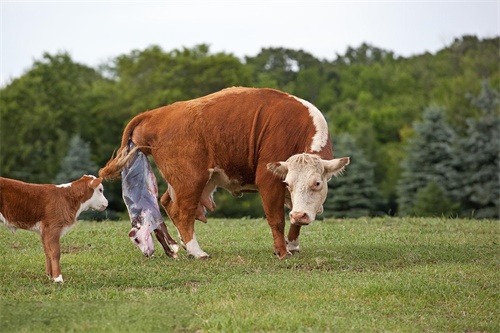Veterinary Ultrasound Applications in Boer Goats
Boer goats, renowned worldwide for their meat production and adaptability, represent an important livestock species in many countries. Optimizing their reproductive performance and health is essential to enhance productivity and profitability for goat farmers globally. Among the many modern techniques available, veterinary ultrasound has emerged as an invaluable, non-invasive tool that revolutionizes how producers monitor reproductive health, fetal development, and nutritional impacts on Boer goats.

In this article, we explore how veterinary ultrasound plays a crucial role in assessing reproductive function and management in Boer goats. We delve into its application in observing ovarian follicle development, evaluating fetal growth, and detecting the effects of trace elements and nutrition on reproductive efficiency. Drawing from international research and practical experiences, this article highlights how ultrasound technology empowers farmers and veterinarians to improve Boer goat productivity.
Trace Elements Impact Revealed Through Ultrasound
Reproductive health in female livestock is strongly influenced by adequate nutritional status, including sufficient minerals and trace elements. Essential elements like phosphorus, copper, manganese, and selenium have well-documented effects on ovarian function, estrus timing, and embryo survival. Deficiencies in these micronutrients can lead to ovarian insufficiency, delayed first estrus, habitual abortion, and early embryonic death—serious challenges that reduce herd fertility and growth.
Veterinary ultrasound enables direct visualization of ovarian structures, allowing veterinarians to detect abnormalities in follicle growth patterns linked to mineral deficiencies. In Boer goats, abnormal follicular development seen on ultrasound may indicate underlying nutritional gaps. For example, selenium deficiency has been associated with poor follicular maturation and embryonic loss, a connection confirmed through ultrasound monitoring.
Moreover, vitamins also play a significant role. Deficiencies in vitamins A and E often cause irregular estrous cycles, delayed fetal development, and lower neonatal survival rates. Ultrasound examinations can identify such developmental delays in utero, prompting timely nutritional interventions.
The energy status of female goats before and after kidding also affects reproductive outcomes. Research indicates that pre-kidding energy levels influence estrus resumption and conception rates within 80 days postpartum, while post-kidding nutrition impacts subsequent estrous cycles and fertility. Veterinary ultrasound allows for monitoring pregnancy status and fetal well-being, helping correlate energy management practices with reproductive success.
Monitoring Ovulation Number with Ultrasound
Boer goats present a unique model between single- and multiple-offspring species, typically ovulating 2 to 6 eggs per estrous cycle. This ovulation range offers excellent opportunities to study follicular development mechanisms.
Using veterinary ultrasound during the estrus period, veterinarians can observe the number of mature follicles present on the ovaries. This real-time imaging facilitates accurate ovulation counts and assessment of follicle size and quality. Such observations are invaluable for breeding management and selection.
Scientific studies have demonstrated that follicular development and ovulation number result from complex interactions among genes, hormones, and cellular factors. Investigating these influences during different follicle development stages in Boer goats enriches understanding of reproductive biology and informs advanced breeding techniques like synchronized estrus and superovulation.
In modern reproductive management, synchronized estrus protocols combined with ultrasound monitoring allow precise timing of mating or artificial insemination to maximize conception rates. Superovulation strategies aimed at increasing ovulation numbers rely heavily on ultrasound to monitor follicle response and adjust hormonal treatments accordingly.
By improving the understanding and manipulation of ovulation patterns through ultrasound, farmers can enhance prolificacy and litter size, thus maximizing production potential.

Comparative Insights from Global Research
Globally, veterinary ultrasound has become a standard tool in small ruminant reproduction research and herd management. Studies from Australia, the United States, and Europe emphasize its utility in improving reproductive efficiency in goats.
For instance, Australian researchers have used ultrasound to correlate trace mineral supplementation with improved follicular growth and conception rates in Boer goats, confirming the critical role of balanced nutrition. Meanwhile, American universities have integrated ultrasound into reproductive management programs to refine estrus synchronization and superovulation protocols, achieving higher kidding rates.
In Europe, veterinary ultrasound is widely adopted not only for reproduction but also to monitor fetal development and detect pregnancy complications early, improving neonatal survival. These practices have been adapted to Boer goats in various countries, facilitating their global dissemination.
The international experience underscores that ultrasound technology, combined with nutritional management and reproductive techniques, forms a powerful triad to boost Boer goat productivity sustainably.
Practical Applications and Benefits on the Farm
From a farm management perspective, veterinary ultrasound offers numerous practical advantages:
-
Non-invasive, stress-free examination: Ultrasound scans do not harm or stress the animals, making it suitable for frequent monitoring during critical reproductive stages.
-
Real-time reproductive status: Farmers can confirm pregnancy status, estimate fetal numbers, and detect reproductive disorders promptly, enabling quick intervention.
-
Optimization of breeding protocols: Ultrasound facilitates precise timing for mating or artificial insemination, increasing success rates.
-
Early detection of developmental issues: Identifying fetal growth retardation or ovarian anomalies early helps manage at-risk pregnancies.
-
Enhanced understanding of nutrition impacts: Visualizing ovarian and fetal health responses to dietary changes supports evidence-based feeding strategies.
-
Increased litter size and herd growth: Through monitoring and managing ovulation and conception efficiently, overall productivity improves.
These benefits contribute to economic gains by reducing reproductive losses and increasing kid output.
Future Directions and Innovations
Looking ahead, advances in ultrasound technology and reproductive science promise to further empower Boer goat management. Portable, higher-resolution ultrasound devices are making on-farm scanning easier and more accessible.
Combining ultrasound with hormonal assays, genetic testing, and precision nutrition will enable more individualized reproductive management plans. Artificial intelligence tools analyzing ultrasound images could improve diagnostic accuracy and predict reproductive outcomes.
In addition, integrating ultrasound findings into herd management software will streamline record-keeping and decision-making processes, enhancing farm efficiency.
As the global demand for quality goat meat grows, embracing veterinary ultrasound technology remains a key strategy to meet production goals sustainably.
Conclusion
Veterinary ultrasound applications in Boer goats have transformed reproductive management and herd productivity worldwide. By allowing direct, non-invasive observation of ovarian function, ovulation, fetal development, and the impact of nutrition, ultrasound provides critical insights that support evidence-based interventions.
The technology’s role in assessing trace mineral and vitamin effects, monitoring ovulation numbers, and guiding breeding protocols is particularly valuable for maximizing reproductive efficiency. Drawing on international experience, Boer goat producers can leverage ultrasound to enhance prolificacy, improve kid survival, and increase economic returns.
Incorporating veterinary ultrasound into routine herd management represents a forward-thinking approach that integrates animal health, welfare, and productivity. For Boer goat farmers aiming to elevate their operations, ultrasound technology is an indispensable tool in their arsenal.



